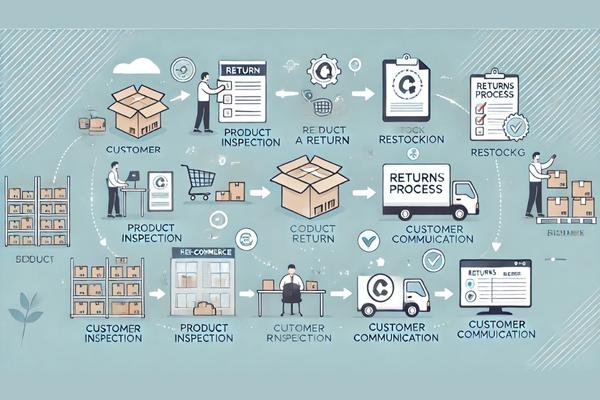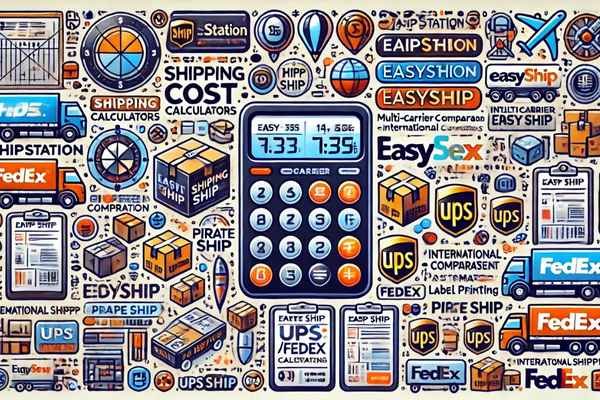
Top 10 E-commerce Analytics Tools to Grow Your Online Store in 2025
October 1, 2024
How to Use Sales Analytics Tools to Improve E-commerce Performance
October 1, 2024How to Choose the Best E-commerce Analytics Tool for Your Business
Choosing the best e-commerce analytics tool can be overwhelming. With so many platforms offering different features, knowing which one fits your needs is crucial. Whether you’re a digital marketer, developer, or content creator, having access to comprehensive data insights can make all the difference in optimizing your strategies and maximizing your sales. In this article, we’ll explore the most important factors to consider when choosing an analytics tool for your business.
Table of Contents
1. Why Do You Need E-commerce Analytics?
E-commerce analytics helps businesses track customer behavior, sales, and website performance. But why is this important? Here are some of the key benefits:
- Customer Insights: Understand who your customers are, what they want, and how they interact with your website.
- Performance Tracking: Monitor your website’s performance, identify traffic sources, and discover what’s working or what isn’t.
- Marketing Optimization: Use data to adjust your marketing strategies and maximize your ROI (return on investment).
- Sales Insights: Track conversions, analyze sales trends, and optimize your product offerings.
A powerful e-commerce analytics tool gives you actionable data that helps in decision-making, improving customer experiences, and driving revenue growth.
2. What to Consider When Choosing an E-commerce Analytics Tool?
Not all analytics tools are created equal. Here’s a breakdown of the essential features and considerations:
2.1. Ease of Use
Whether you’re a seasoned digital marketer or a business owner managing an online store, you want an analytics tool that is easy to navigate. Look for platforms with intuitive dashboards, pre-built reports, and customizable features.
- User-friendly Interface: Does the tool offer a clean and easy-to-understand dashboard?
- Customizable Reports: Can you easily customize the metrics and KPIs you want to track?
2.2. Real-Time Data
In e-commerce, timing is critical. Real-time data allows you to monitor customer activity as it happens. This can be especially helpful during marketing campaigns, seasonal sales, or product launches.
- Real-Time Analytics: Can the tool track website visitors and sales in real-time?
- Live Reporting: Does it offer live reporting to help you make quick decisions?
2.3. Multi-Channel Tracking
Your customers may come from various sources—social media, paid ads, email marketing, or organic search. A good analytics tool will allow you to track all these sources and give you a comprehensive view of customer interactions.
- Cross-Channel Analytics: Can you track multiple channels like social media, email, or ads?
- Referral Sources: Does the tool show you where your traffic is coming from?
2.4. Customization and Flexibility
Every e-commerce business is unique, and so are its analytics needs. Choose a tool that allows you to set custom goals, KPIs, and segments. This level of flexibility helps you focus on what’s most important for your business.
- Custom Metrics: Can you create custom KPIs relevant to your business?
- Segmentation: Does the tool allow you to segment customers based on behaviors, location, and preferences?
2.5. Integration with Other Tools
An e-commerce business often relies on multiple platforms, such as payment processors, email marketing tools, and CRM systems. Your analytics tool should seamlessly integrate with these platforms for smooth data exchange.
- Third-Party Integrations: Can it integrate with your email platform, CRM, or payment gateway?
- API Support: Does the tool offer API access for custom integrations?
2.6. Scalability
As your business grows, your analytics needs will also evolve. Ensure that the analytics tool you choose can scale alongside your business and accommodate increased data, traffic, and user activity.
- Handling High Traffic: Can the tool manage an increasing number of visitors without lagging?
- Business Expansion: Will it support your needs as you expand into new markets or add new product lines?
2.7. Data Security and Compliance
With data breaches on the rise, it’s crucial to choose an analytics tool that prioritizes security. Look for tools that offer data encryption, GDPR compliance, and secure data storage.
- Data Encryption: Does the platform use encryption to protect sensitive information?
- Compliance: Is the tool compliant with data protection regulations like GDPR?
3. Top E-commerce Analytics Tools (with Affiliate Links)
Here’s a curated list of top e-commerce analytics tools, all of which offer unique features tailored to various business needs.
3.1. Google Analytics
Google Analytics is one of the most popular and versatile tools available. It’s free and provides in-depth insights into your website traffic, user behavior, and conversion tracking.
- Key Features:
- Multi-channel tracking
- Custom reports and dashboards
- Integration with Google Ads and other platforms
- Best For: Businesses of all sizes, from small startups to large enterprises.
- Affiliate Link: Get Started with Google Analytics
3.2. Kissmetrics
Kissmetrics focuses on user behavior and helps businesses optimize their customer journeys. It provides detailed insights into how customers engage with your e-commerce site.
- Key Features:
- Behavioral tracking
- A/B testing capabilities
- User-level data and reports
- Best For: Businesses focused on optimizing user experiences and conversions.
- Affiliate Link: Explore Kissmetrics
3.3. Mixpanel
Mixpanel specializes in product and user analytics, providing businesses with data that helps them understand user engagement and product success.
- Key Features:
- User segmentation
- Funnel analysis
- Retention tracking
- Best For: Developers and content creators focused on optimizing products and user engagement.
- Affiliate Link: Try Mixpanel for Free
3.4. Hotjar
Hotjar combines heatmaps, session recordings, and surveys to help businesses understand user behavior and optimize their website performance.
- Key Features:
- Heatmaps and session recordings
- Conversion funnels
- Feedback and survey tools
- Best For: Businesses looking to improve website UX and conversion rates.
- Affiliate Link: Discover Hotjar
How to Choose the Best E-commerce Analytics Tool for Your Business
Top E-commerce Analytics Tools Comparison
| Tool | Key Features | Best For | Affiliate Link |
|---|---|---|---|
| Google Analytics | Multi-channel tracking, Custom reports, Integration with Google Ads | Businesses of all sizes | Get Started |
| Kissmetrics | Behavioral tracking, A/B testing, User-level data | Optimizing user experiences and conversions | Explore Kissmetrics |
| Mixpanel | User segmentation, Funnel analysis, Retention tracking | Developers and product optimization | Try Mixpanel |
| Hotjar | Heatmaps, Session recordings, Feedback tools | Improving UX and conversion rates | Discover Hotjar |
Frequently Asked Questions (FAQs)
What is the best e-commerce analytics tool for small businesses?
For small businesses, Google Analytics is often the best choice due to its robust features and cost-effectiveness. It’s free to use and offers comprehensive insights that are essential for growing businesses.
How can I use e-commerce analytics to increase sales?
By analyzing customer behavior, you can identify what products are performing well, which pages have high bounce rates, and where customers are dropping off during checkout. Optimizing these areas can lead to increased sales.
Can e-commerce analytics tools track mobile app data?
Yes, many e-commerce analytics tools, like Google Analytics and Mixpanel, allow you to track mobile app data, providing insights into user behavior across multiple devices.
Conclusion
Choosing the right e-commerce analytics tool is vital for understanding customer behavior, optimizing your marketing strategies, and increasing sales. Whether you’re just starting or looking to scale your business, the tools mentioned in this guide offer powerful features that cater to various business needs. By evaluating each tool based on the factors discussed—ease of use, real-time data, multi-channel tracking, and scalability—you’ll be well-equipped to make an informed decision that will benefit your business in the long run.








